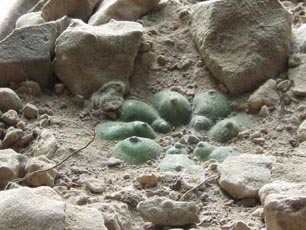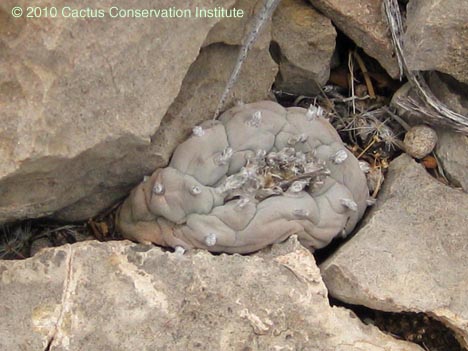
Handcrafted peyote jewellery
Thanks to the artistic skills of Blake Williams, Cactus Conservation Institute has, in the past, offered some unique gifts. This blog post is created in fond memory of Blake.
Each handcrafted offering exemplifies a type and condition of these extraordinary plants we seek to protect.
They are no longer available.
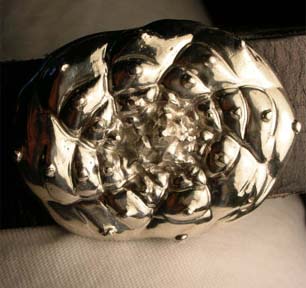
“The Vortex” (2″ by 1 ½”), in sterling silver.
This tenacious specimen was found growing in an inch wide crack in a rock slab which gave it its distinctive “pinched” configuration.
The cast captured a conical flower bud bursting from the tufts in the center of the plant. In another day this bud opened into the vivid pink flower typical of peyote.
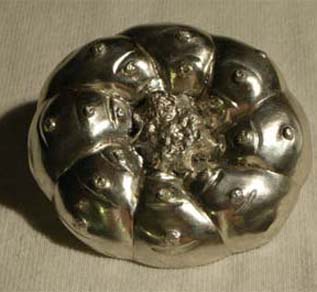
“El Brujo” (2 ½” in diameter) in sterling silver.
The original casting of this 8 ribbed beauty was taken in the Chihuahuan desert, a region with much colder winters than south Texas. Tenaciously weathering freezing winters by growing on the southern, sun-facing slopes of its mountainous home, this individual embodies the power of its kind.
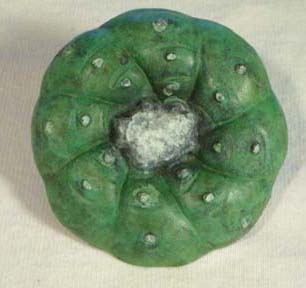
“El Brujo” (2 ½” in diameter).
Bronze with patina, here shown in ‘mystic green’.
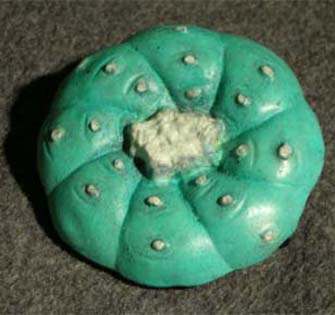
“El Brujo” (2 ½” in diameter).
Bronze with patina, here shown in ‘turquoise matte’.
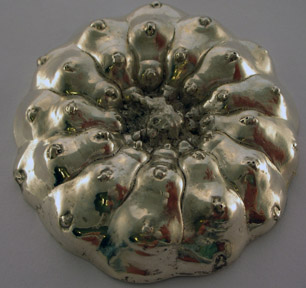
“El Trece” (2-3/4″ in diameter) in silver.
This 13 ribbed elder thrives in dappled light under the quajillo scrub in the S. Texas peyote gardens.
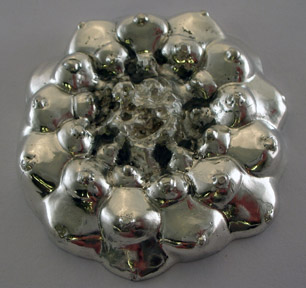
“El Mistico” (2-1/4″ in diameter) in silver
This variant from the peyote gardens expresses an unusual obscured rib structure.
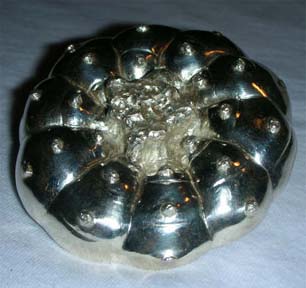
“El Abuelo” (2-5/8″ in diameter) in silver
This look is prized in the central altar piece used in Native American Church ceremonies where it is addressed as ‘Grandfather’.
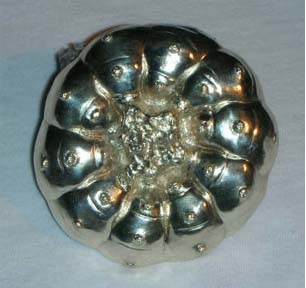
“El Abuelo” (2-5/8″ in diameter) in silver
This look is prized in the central altar piece used in Native American Church ceremonies where it is addressed as ‘Grandfather’.
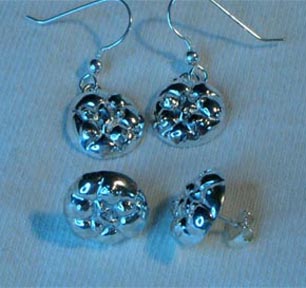
“Las Estrellitas” (3 grams each, 13 mm in diameter)
Peyote propagates itself through seeding and budding. Budding occurs on the side of mature cacti at ground level and often leads to clumps of many self-cloned individuals.
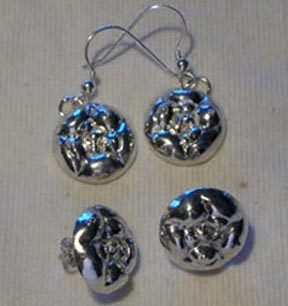
“Las Estrellitas” (4.5 grams each, 17 mm in diameter)
These casts were molded from a type found in the peyote gardens of Starr County, south Texas called “Star Peyote” by a local peyotero.
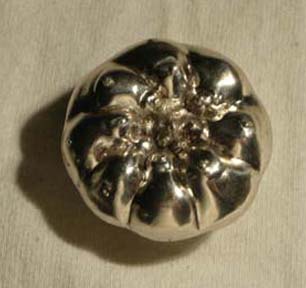
“La Huella” (1 ¾” in diameter) in sterling silver.
This smaller specimen from the Chihuahuan desert was cast during the rainy season (August-September) and exhibits the exaggerated form it takes during this period of robust growth and flowering.
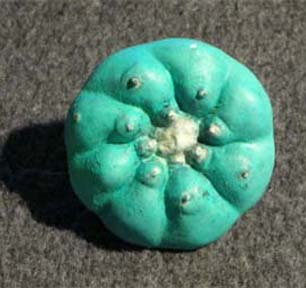
“La Huella” (1 ¾” in diameter). Bronze with patina, here shown in ‘turquoise matte’.
During the dry, cold months of winter, this same individual will flatten out and possibly shrink below the ground surface, a perfect adaptation to the harsh winters.
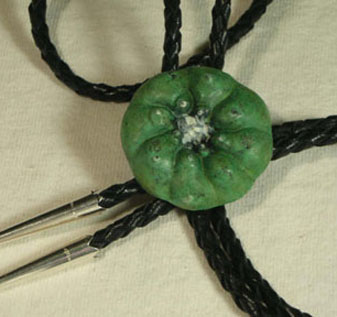
“La Huella” (1 ¾” in diameter). Bronze with patina, here shown in ‘mystic green’.
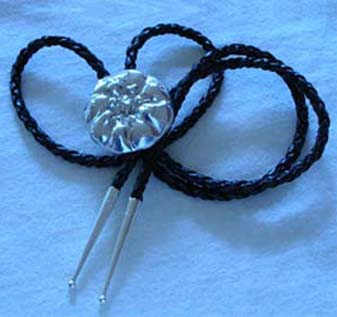
“La Huella” (1 ¾” in diameter) in sterling silver.
No peyote was harmed in the making of these items!
You might be asking “How was that possible? They look so realistic!”
Each mold was carefully cast by Blake Williams in situ in the natural setting in which the peyote was found, and the living peyote plant was left there undamaged to continue its existence. The appearance of these is therefore unique in that they are from living plants growing in their natural habitat. The form such plants take is considerably different from that of plants grown “in captivity”.
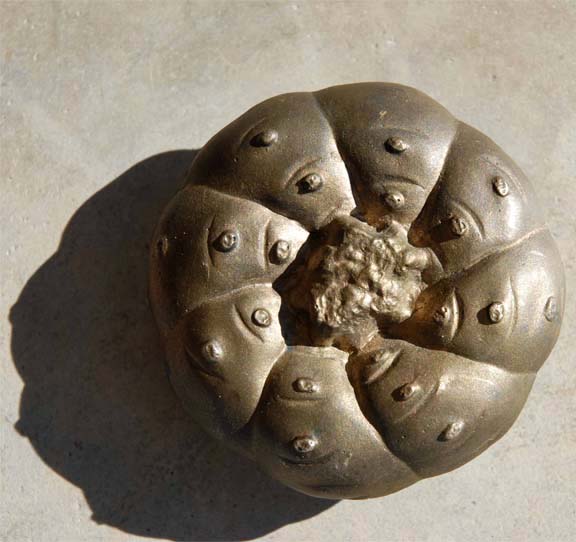
“El Brujo” (2 ½” in diameter)
(The buckle shown is well worn.)
The original casting of this 8 ribbed beauty was taken in the Chihuahuan desert, a region with much colder winters than south Texas. Tenaciously weathering freezing winters by growing on the southern, sun-facing slopes of its mountainous home, this individual embodies the power of its kind.
Some scholars have classified this as a distinct subspecies, more potent and slower growing than the varieties found in the south Texas areas known to the Native Americans as the “peyote gardens”.
Dr. Terry’s ground-breaking research has shown this northern variety to be genetically distinct from its southern relatives.
No contribution has ever been used for compensation of any CCI staff member who will all continue to freely volunteer their time, labour and expertise. Including the making of this jewellery.
Some lucky individuals are maintaining their peyote button as a legal part of a cactus garden or collection.
